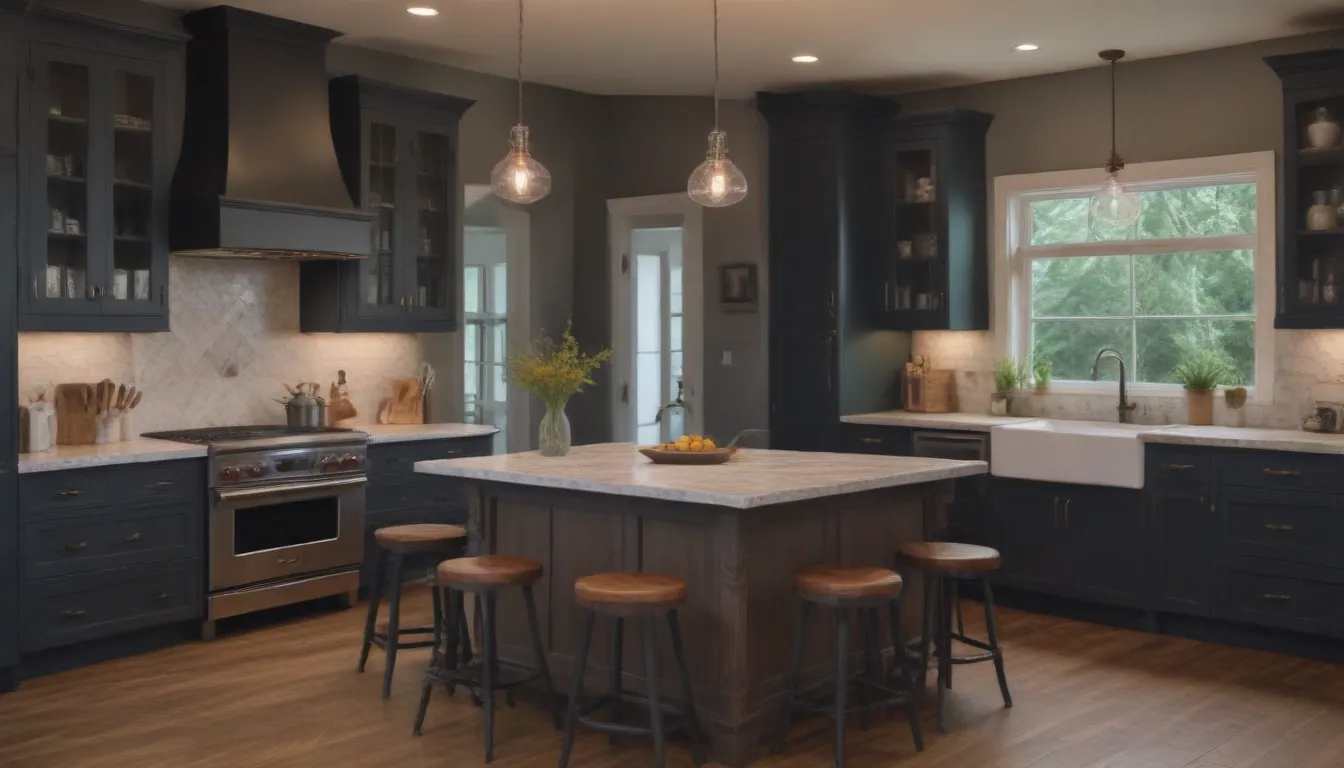Ultimate Guide to Kitchen Remodeling: Transform Your Space with Ease

Are you considering a kitchen remodel but feeling overwhelmed by the sheer magnitude of the project? Fear not, as we have got you covered! In this comprehensive guide, we will walk you through the basic steps of kitchen remodeling, from assessing your needs and wishes to the final touches that make your new kitchen shine. By the end of this article, you will be equipped with valuable information to approach your kitchen remodel with confidence and ease.
The Benefits and Considerations of Kitchen Remodeling
A kitchen remodel is a major undertaking that can significantly improve the functionality, aesthetics, and value of your home. While the process can be daunting, the results are well worth the effort. Here are some key benefits and considerations to keep in mind before embarking on a kitchen remodeling project:
- Increased Value: A well-executed kitchen remodel can enhance the equity value of your home, making it a worthwhile investment for the long term.
- Improved Functionality: By addressing persistent problems with your current kitchen layout, you can create a more efficient and user-friendly space for cooking and entertaining.
- Personalized Space: A kitchen remodel allows you to tailor the design to your specific needs and preferences, creating a space that reflects your style and lifestyle.
Assessing Your Needs and Desires
Before diving into a kitchen remodel, take the time to assess your needs and desires for the space. Consider the following questions to help prioritize your remodeling goals:
- What are the persistent problems with your current kitchen layout?
- Do you need more storage space, countertop space, or dining areas?
- Are your appliances outdated or inefficient?
- What aesthetic changes would you like to make to enhance the overall look of your kitchen?
By identifying your priorities and distinguishing between essential needs and desirable upgrades, you can create a clear vision for your new kitchen.
Kitchen Design and Planning
Once you have a solid understanding of your needs and desires, it’s time to delve into the design and planning phase of your kitchen remodel. Consider the following tips to streamline the process:
- Basic Kitchen Plans: Explore classic kitchen design plans that incorporate the kitchen triangle for optimal functionality.
- Utilize Resources: Use kitchen design software, physical design packages, or consult with kitchen designers to develop detailed plans and blueprints for your new kitchen layout.
Hiring a Contractor or DIY Approach
After finalizing your kitchen layout and design plans, you’ll need to make a crucial decision on whether to hire a general contractor, tackle the project yourself, or hire individual subcontractors. Consider the following options:
- Hire a GC (general contractor): Delegate the project management to a professional who can oversee the entire remodeling process.
- DIY Approach: Take on the project yourself to save costs and have more control over the outcome.
- Hire Subcontractors: Opt for a mix of DIY work and hiring subcontractors for specialized tasks to achieve a balanced approach to the remodel.
Building Permits and Preparation
Before starting work on your kitchen remodel, it’s essential to obtain the necessary building permits and make preparations for the project. Here are some key considerations:
- Building Permits: Apply for permits from local agencies for electrical, plumbing, and structural work as required by regulations.
- Prepare Your Home: Make contingency plans for meals and living arrangements during the remodel to minimize disruptions to your daily routine.
The Step-by-Step Process of Kitchen Remodeling
Now that you have a solid plan in place, let’s walk through the step-by-step process of kitchen remodeling, from demolition to final touches:
1. Kitchen Demolition
The first step in a kitchen remodel is the demolition of the existing space. This can be a messy but exciting phase where old appliances and materials are removed to make way for the new.
2. Kitchen Structural Build-Out
Once the demolition is complete, the carpentry crew will begin the structural build-out phase, which may involve framing work for new windows, walls, or structural modifications to support the new kitchen layout.
3. Plumbing, Wiring, and HVAC Rough-In
During this phase, new plumbing pipes, electrical wiring, and HVAC ductwork are installed to accommodate the new layout and fixtures of the kitchen. It’s crucial to hire licensed professionals for this work to ensure compliance with building codes.
4. Finish Walls and Ceilings
With the rough-in work completed, the walls and ceilings are closed up with insulation, drywall installation, and finishing. This phase prepares the space for the final aesthetic touches.
5. Install Flooring
Flooring installation is one of the last stages before cabinets and appliances are installed. Choose a flooring type that complements your design aesthetic and suits your lifestyle.
6. Install Cabinets and Countertops
Cabinet and countertop installation require precision and attention to detail. Whether you hire professionals or take on the task yourself, ensure that the installation is done correctly to achieve a seamless look.
7. Install Appliances, Plumbing, and Wiring Fixtures
The final connections of appliances, plumbing fixtures, and lighting fixtures are completed in this phase. This ensures that your new kitchen is fully functional and ready for use.
8. Inspection and Completion
Once all the remodeling tasks are complete, it’s time for a final inspection to ensure that the work meets building codes and safety standards. Make a final walkthrough to address any remaining details and enjoy your newly renovated kitchen space.
Conclusion
Embarking on a kitchen remodeling project can be a rewarding experience that transforms your home and enhances your quality of life. By following the steps outlined in this guide and working with professionals where needed, you can achieve a successful remodel that reflects your style and meets your practical needs. Remember to plan carefully, stay organized, and enjoy the process of creating your dream kitchen!
References:
– Remodeling Impact Report, 2022. National Association of Realtors Research Group.
– When Do You Need A Permit For Residential Work? Mecklenburg County Code Enforcement.
– City of Newport News Asbestos & Lead-Based Paint Maintenance Program. City of Newport News, VA.
– National Electric Code, 2017. National Fire Protection Association.





